Category: Inspiration
Posted by Dr. El - June 21, 2012 - For Fun, Inspiration

Psychologically speaking, it’s healthy to embrace life’s challenges and to find strength and humor within them. I sometimes suggest that residents hold an “open house” party to gather their friends and family members instead of waiting for them to visit. In my post, Having Fun in a Nursing Home, I wrote about how my residents and I often laugh at the odd goings-on that can only be funny when you’ve been in a nursing home for a while, and noted a company, Draisin, that sells tandem bicycles so that an able-bodied person can accompany someone who wouldn’t otherwise be able to peddle a bike.
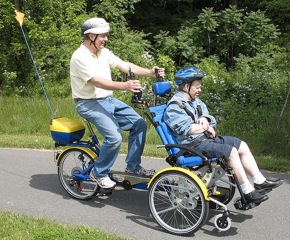
Draisin Tandem Bike
Beautiful carry-all bags are available for wheelchairs and walkers at HDS Medallion, and a Google search for “designer canes” turns up many wonderful options, including those available at Pat Heyward Canes.

HDS Medallion CarryAll Bag

Pat Heyward Canes
This weekend I heard a story on NPR about Bespoke Innovations, which makes fairings, described as “specialized coverings that surround an existing prosthetic leg.” The fairings express the individuality of the wearer and those interviewed reported many compliments on their prostheses.

Bespoke Innovations
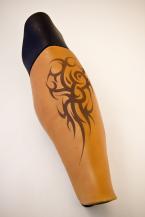
Bespoke Innovations
These are a few of the many ways we can “flip the script” on the experience of loss for those in the nursing home. Feel free to add ideas of your own in the Comments sections.
Posted by Dr. El - June 1, 2012 - Books/media of note, Inspiration
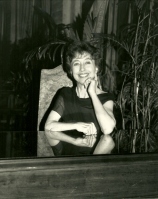
I’m lucky enough to hear the private perspective of nursing home residents every day, but for those of you wondering what residents really think about living in long-term care, here are some blogs that generously offer their often surprising, sometimes shocking, viewpoints.
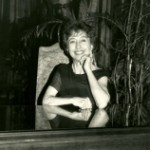
Straw Flowers, “one woman’s 20+ year journey through the elder care system,” is 78-year old Marya Methven’s wise and engaging chronicle of her life and long-term care experience.
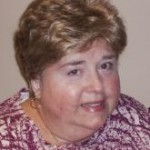
Kathleen Mears blogs for Long-Term Living Magazine about her 16 years of life in nursing homes as an incomplete quadriplegic. She is very attuned to the social dynamics of the nursing home and to the impact of rules and regulations on the residents.
Worthless Goddamn Cripple is the angry, profane, insightful blog written by a man who had a stroke at the age of 33 (see the synopsis page for details). He offers a youthful perspective well worth the read and, despite the fact that the blog mysteriously ended in 2008, it’s still relevant.
If you know of other nursing home resident blogs, please add the urls to the Comments section. Thanks!
Posted by Dr. El - May 10, 2012 - Business Strategies, Inspiration, Something Good About Nursing Homes

 On Monday, I blogged about a contest to transform “a day in the life of the resident.” I like this contest because it asks staff members for their often-overlooked expertise, and is designed to improve life for the residents, centering the nursing home day around their needs rather than vice versa. I got an update on Tuesday from Dave Sedgwick, initiator of the Ensign Group’s $150K e-prize contest. He reports not one, but two winners, with $100K going to Brookfield Healthcare in Downey, California, and a $50K Special Honors prize to Julia Temple in Englewood, Colorado.
On Monday, I blogged about a contest to transform “a day in the life of the resident.” I like this contest because it asks staff members for their often-overlooked expertise, and is designed to improve life for the residents, centering the nursing home day around their needs rather than vice versa. I got an update on Tuesday from Dave Sedgwick, initiator of the Ensign Group’s $150K e-prize contest. He reports not one, but two winners, with $100K going to Brookfield Healthcare in Downey, California, and a $50K Special Honors prize to Julia Temple in Englewood, Colorado.
Brookfield’s winning entry focuses on the theme of being a “Brookfield Zero,” meaning zero deficiencies on surveys, and has customer service at its core. According to their application, they used to be a “traditional” nursing home — “bland, generic, colorless, and flavorless,” until they made the decision to “show the world that skilled nursing facilities are no longer a place to die, but a place to live, learn, and grow.” Some of the highlights: They harnessed the passion and enthusiasm of their staff to create programming that engages the residents, such as tai chi and computer classes. Showers are provided by two dedicated “shower girls” who offer them at the frequency requested by the residents. Nurses answer the call bells as soon as they’re rung, and all staff members greet resident requests pleasantly. To compensate for a small parking lot, valet parking is provided. Brookfield’s application is in the form of a recipe book to encourage replication of their process.
Special Honors were given to Julia Temple, based on their “jaw-dropping” transformation of a facility for residents with dementia. Dave reports that when he entered the facility on the day Ensign acquired it, he was, for the first time in his career, afraid of being in a facility. At that time, it was common to observe physical restraints of agitated residents in order to administer sedating medication. Now, he describes the environment as “peaceful, loving, calm, and productive .” Using the Allen’s Cognitive Levels model to assess the abilities of residents, Julia Temple groups residents into neighborhoods based on their abilities, and offers programs to enhance their experience at each level. They also emphasized increasing the involvement and satisfaction of staff members. For example, they created an employee council to improve communication between management and caregiver, and a wellness program that, among other offerings, provides free massages to staff members on their lunch breaks.
While some of the innovations in the contest facilities required site renovations, more of the changes leading to success were focused on rethinking systems and improving customer service — something that can be accomplished by every facility, everywhere.
Posted by Dr. El - April 26, 2012 - Inspiration, Resident care, Something Good About Nursing Homes
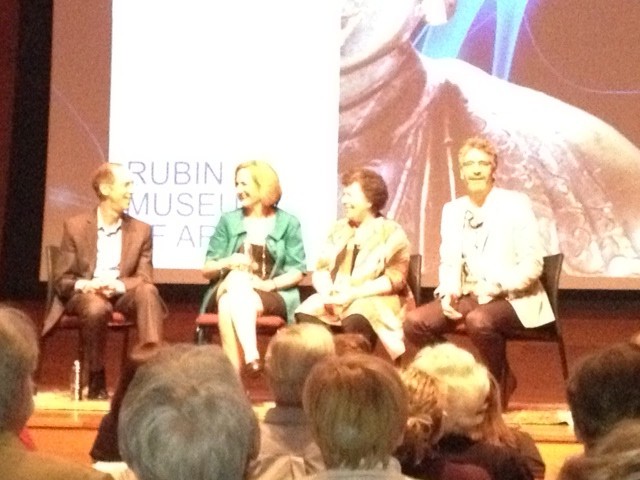
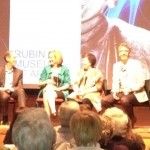
The post-film discussion at the Rubin Museum
The video clip I posted last week from the movie Alive Inside: A Story of Music and Memory has “gone viral.” There were well over 6.5 million views as of last Saturday, when I saw the documentary and post-film discussion and spoke with Dan Cohen, the social worker who started the ipod project. Here are a few points I took away from the experience that might be helpful for readers considering individualized music for their residents with dementia:
- While all music can be beneficial, studies of the brain show that different parts “light up” when a person hears the music that is most connected to them. In other words, individualized music has a greater impact than the songs played for a group.
- The music that tends to resonate most for people is that heard during their formative period of about 15-24 years old.
- Dan Cohen’s Music and Memory organization has an 5-hour inservice that trains staff on how to use the devices with the residents, and answers common questions such as those regarding infection control and on securing the ipods so they don’t get lost or stolen.
- The time spent by staff on the program is more than made up for in reduced time in other areas because the residents tend to be happier and more cooperative.
Here’s an interesting interview with social worker Dan Cohen on NPR: Treating Dementia with Music
Posted by Dr. El - February 15, 2012 - Inspiration, Resident education/Support groups, Something Good About Nursing Homes
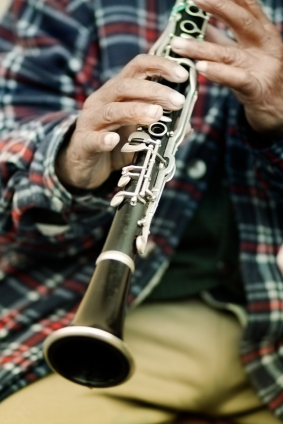
I always enjoy reading about senior recreation programs that offer options way beyond bingo. Not that there’s anything wrong with bingo, but when it’s my turn, I’ll be looking for a nursing home with a substantial activities schedule. A reader — thanks, RR — informed me of the success of the college-level psychology courses he organizes at his assisted living facility. (When it’s my turn, maybe I’ll teach one of those…) The New York Times article excerpted below describes a collaboration between Carnegie Hall musicians and Beth Abraham nursing home that gave residents the experience of a lifetime.
If you’ve heard of an interesting or unusual program for seniors, especially those in the nursing home, please share it in the Comments section.

Weakened by Age and Illness, Hands Teem With Creativity
By SUZANNE DeCHILLO/The New York Times
Published: February 12, 2012
Through the Musical Connections program, residents at Beth Abraham Health Services like Richard Ivory were given the opportunity to collaborate with musicians from Carnegie Hall’s Weill Music Institute in creating and performing original pieces.
Ms. Previte, 72, who is chronically ill, writes lyrics. She scribbles the words on the back of nursing home menus, mostly songs about love lost or love found.
For two weeks, she joined six other residents at Beth Abraham Health Services in a collaboration with seven chamber music players from Carnegie Hall’s Weill Music Institute, whose Musical Connections program aims to bring music to a wider audience, in healthcare settings, prisons, homeless shelters and senior service organizations.
Read more…
Posted by Dr. El - October 27, 2010 - Business Strategies, Inspiration
Part Two of a Three Part Series
Part Three — Medical Cost Offset: The Role of Psychology at Signature HealthCARE)
I wasn’t expecting to write a post on Signature HealthCARE, but I was impressed by what I read during my research on the International Center for Long-Term Care Innovation and by my interview with E. Joseph Steier, III, President and CEO of Signature HealthCARE. Long-term care is multi-faceted and fascinating to me, and I often feel facilities could be taking greater advantage of opportunities for research, learning, and spiritual growth. I was excited to hear that Signature HealthCARE is doing just that.

E. Joseph Steier, III, President & CEO of Signature HealthCARE,
with John Reinhardt, President & CEO of the International Center for Long-Term Care Innovation, which works in partnership with Nucleus and the University of Louisville
- Intra-preneurship, which refers to the development of businesses aligned with their nursing facilities, such as home and community based services and their furniture company.
- Learning, which is manifested through a monthly podcast by Steier that’s available to all employees via the company intranet and numerous on-site and off-site meetings. For example, they have an annual “learning congress” for top management, and a five-day “CEO school” for facility administrators, taught by Steier himself. “Best practices” to improve resident and staff quality of life are shared between facilities, and the company is increasing its learning focus through other initiatives, including establishing an Institute of Long-Term Care Studies.
- Spirituality, which is incorporated into facility life by including nondenominational chaplains at morning clinical meetings, care plans, and other quality improvement meetings, in addition to providing services to residents and their families.
Smaller organizations can easily use some of these ideas, such as sharing best practices and increasing communication between the CEO/administrator/owner and employees.
By opening themselves up to social media like My Better Nursing Home, Signature HealthCARE has the opportunity to manifest their pillar of learning through their response to comments, positive and negative, that can inform their practices.
Posted by Dr. El - October 20, 2010 - Inspiration
Part One of a Three Part Series
(Part Two — Signature HealthCARE: Great Ideas in Practice
Part Three — Medical Cost Offset: The Role of Psychology at Signature HealthCARE)
The International Center for Long-Term Care Innovation is located in Louisville, Kentucky, among the city’s cluster of healthcare businesses. I had the opportunity to speak with John Reinhardt, President and CEO of the Innovation Center, about it’s structure, mission, and research.
The Center works in partnership with
The purpose of the LTC Innovation Center, according to Reinhardt, is to improve the quality of care and of life for residents. The collaboration of service providers and researchers allows for an exchange of ideas. Researchers hear from those in the field what needs to be studied and improved upon, and the products of the research can be tested within the many facilities owned by Signature.
Projects include a multi-sensory room to connect via sound and touch with people with late-stage dementia, and auto-hydration furniture to combat dehydration, described as a refrigerated table that dispenses liquid.
Teamwork is essential in long-term care, and the International Center for Long-Term Care Innovation creates a higher level team, partnering researchers, businesses, and service providers. Below, John Reinhardt with team members.
Posted by Dr. El - August 4, 2010 - End of life, Inspiration, Something Good About Nursing Homes

William Losefsky, Director of Safety, Security & Emergency Management for the New Hampshire State Veterans Home contributed today’s post. I found it very touching, and I’d like to hear more ways in which nursing homes acknowledge the loss of their residents. If you have a ceremony you’d like to share with MBNH readers, please email it to me via the Contact Me button, or add it to the Comments section at the bottom of this post.
The Final Salute: One long-term care facility’s strategy to say farewell with dignity and respect
Imagine sitting down to breakfast and then noticing that one of your fellow residents is not sitting in his customary spot at the breakfast table. That is when fellow residents would first find out that one of their comrades had passed away. Earlier in the evening the resident had expired and was shuttled out the freight loading dock into a waiting hearse. This was how the death process was dealt with before we instituted the “Final Salute” protocol.
The New Hampshire Veterans Home felt that the resident was welcomed through the front door as a new admission and he should go out that same front door on his final departure. We then worked on coming up with a process that is now known as the “Final Salute.”
We put together a process in which we place an American flag over the gurney of a deceased resident. We then escort the body and lead the deceased resident to our common area by the dining room. The residents are called to attention by the resident council president. We created a short final prayer that is read:
(Resident’s Name) is now leaving the veterans home on his/her heavenly departure. May (Resident’s Name) now rest in peace. We thank you for your honorable service to your country in it’s time of need.
We then salute the deceased resident and the resident counsel president chants “two” and a uniformed security officer escorts the body down the elevator to the main entrance of the facility. The American flag is then removed from the deceased resident prior to being loaded into the funeral director’s vehicle and the flag is then ceremoniously folded and prepared for further service. We announce over the public address system that the resident has passed and we ask for a moment of silence as we ring a brass bell 3 times in somber remembrance of the resident.
Many of our residents pass away at a hospital. We designed a plan for that as well. If the resident passes away from the facility we continue to have the procession walk. Instead of escorting the deceased resident’s gurney, the security officer carries a crisp folded American flag. The security officer walks the length of the hall and stops at the exact location as if the body was at rest. The same exact ceremony is conducted with the security officer holding the flag in symbolic remembrance of the resident.
We slowly integrated having the escorting security officer wear white gloves. Many of our officers keep their shoes and boots at a high level of readiness as General George S Patton was well known for saying “You are always on parade.”
This “Final Salute” protocol has been extremely well received by the residents as they now have proper closure in saying good bye to their comrade in arms. The final salute was recognized in the Quality of Life Award in New Hampshire and was given a standing ovation.
The first time we did this, we were amazed at the military bearing that a 90-year old wheelchair-bound war veteran was able to muster. Many stood up from their wheel chairs and others had to use two hands to snap a salute due to a stroke. It greatly moved the staff as well as the residents and visitors. All we could think of is that we should have been doing this sooner.
A long-term care facility is the last home a person will have and their passing should be something more than a ride through a loading dock. My intent is for others involved in long-term care to read this article about the Final Salute in the hopes that other facilities might take up the practice in honoring their residents who pass. The process does not have to be as elaborate as ours and can build over time. I would suggest involving the residents and the resident council as much as possible.
William R Losefsky CHPA, CMI, CPM, CIRM
Director of Safety, Security & Emergency Management
New Hampshire State Veterans Home
139 Winter Street
Tilton, NH 03276-0229
603-527-4803
http://www.nh.gov/veterans
Posted by Dr. El - August 26, 2009 - Customer service, For Fun, Inspiration, Something Good About Nursing Homes
Today I learned of an Indianapolis-based volunteer organization with a mission “to make the dreams of elderly and terminally ill adults come true.” How cool is that?
Never Too Late has helped an 88-year old man race around the Indy 500 track, an 83-year old woman go sailing, and a 70-year old man learn to read, among the 1825 wishes granted to date.
Posted by Dr. El - August 21, 2009 - Inspiration

Rest in peace, Viv. You will be missed.

May 4, 2009 post on nursing home artist Vivian Mae Treadwell Baker











 On Monday, I blogged about a contest
On Monday, I blogged about a contest







